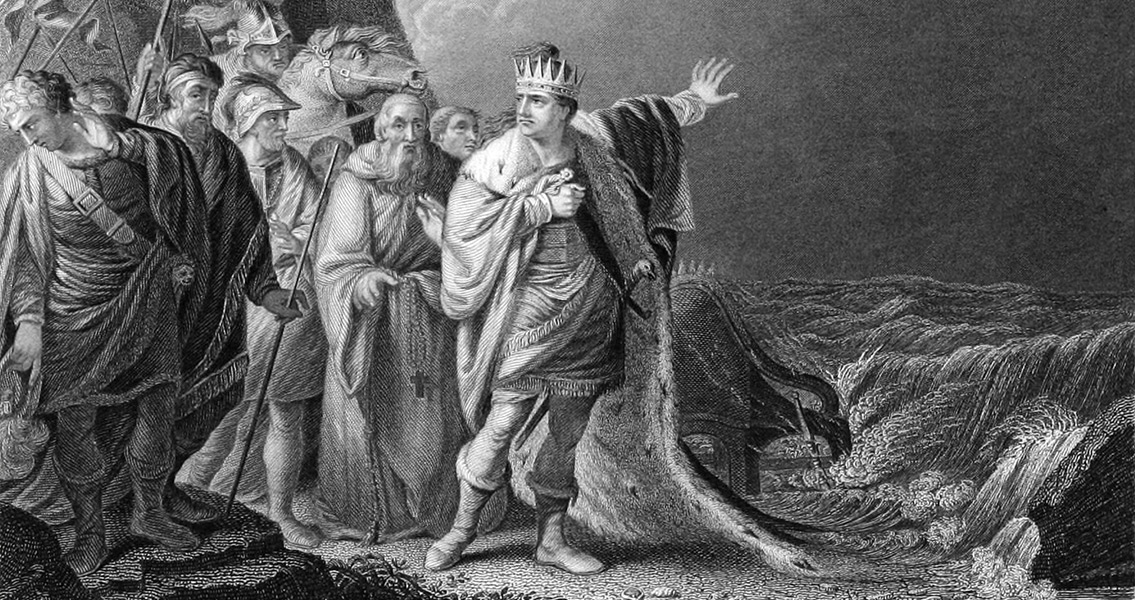<![CDATA[999 years ago, on 30th November 1016, Canute the Great took the throne of the whole of England following the death of his rival, Edmund Ironside. Canute would go on to claim the thrones of Denmark and Norway as well, in 1016 and 1028 respectively. Modern interpretations of Cantue vary drastically, with some highlighting his savagery in taking and consolidating power, while others point to the development of England's trade with Europe under his rule and the respect he held throughout the continent. In 1013 Canute accompanied his father, the Danish king Sewyn Forkbeard, in his invasion of England. The young Canute was left in charge of the Danish fleet at Gainsborough, Lincolnshire, which many believe is the place he met Aelfgifu, the daughter of a local Ealdorman who bore Canute's two sons: Harold and Sewyn. At the turn of the eleventh century, the English King Ethelred the Unready had provoked the Vikings' wrath by launching a massacre of Danish settlers across England. As the epithet suggests, Ethelred was regarded as an ineffectual king who was prone to acts of savagery, and failed miserably to prevent the Vikings overrunning England. By the end of 1013 Sewyn Forkbeard's forces had pushed Ethelred into fleeing to Normandy, and the English accepted him as their new king. As is so often the case in this period of history, Sewyn Forkbeard's sudden death in February 1014 immediately sparked a conflict over his succession, with Ethelred's advisers inviting him to return to take the throne. Although Canute had allies in England, he deserted them and sailed to Denmark to prepare a counter attack. A portent of the savagery to come was shown in Canute's retreat, when his hostages were set ashore at Sandwich, brutally mutilated. In 1015 Canute and his army returned to England and a long, vicious war ensued. Ethelred died in 1016, leaving his son and heir Edmund Ironside to try and hold off Canute's forces which were by then ravaging England. A group of councilors and citizens in London nominated Edmund as their ruler, while a different group elected Canute in Southampton, essentially dividing England into two kingdoms. Edmund attempted to launch a counter offensive against Canute's marauding forces, capturing Wessex and breaking a siege of London, but the triumphs proved short lived. On 18th October Canute secured a decisively devastating victory at Ashington, and Edmund was forced to make a settlement with his rival. It was agreed that Edmund would retain control of Wessex, while Canute would take all lands north of the River Thames. Following Edmund's death on 30th November - probably from natural causes but no source can provide a definitive answer - Canute became the sole ruler of England. The early years of his rule saw the Danish king consolidate his power ruthlessly, perhaps concerned that the English would seek to oust him as they had done following his father's death. Prominent English people were killed or outlawed, while English owned estates were given to Canute's Danish followers as reward for their service. The entire earldom of Northumbria was given to the Viking Eric of Hlathir, while Thorkell the Tall was given control of the whole of East Anglia. By the 1020s this ruthless assault on the English nobility started to slow, and English people began to return to positions of prominence at the expense of the Danes. Along with his successes in securing the Danish and Norwegian thrones, Canute greatly increased England's trade links with mainland Europe. A devout Christian, he used his pilgrimage to Rome in 1027 to attend the coronation of Conrad II and secure better tolls for English and Danish traders through the continent. The story of 'Canute and the Waves', in which the king supposedly attempted to halt the movement of the tides, provides a microcosm of the differing interpretations that surround his reign. Whether based on legend or real events, the very existence of the story illustrates how the king was, and is portrayed. For some, it reveals his madness, a genuine belief that he could halt the tides. For others, it was a demonstration of his humility and piety, an attempt to show his lack of power in comparison to God. ]]>
King Canute Seizes the Whole of England
